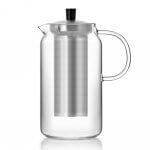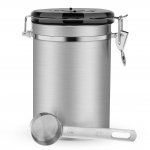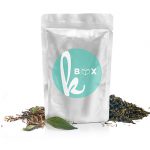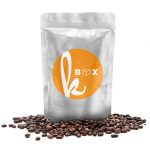
5 Essential Guidelines to Remember In Tea Blending
Have tasted enough or so much tea in your life? Or maybe you are still starting to explore the world of tea?
Whichever it is, don’t you think it would be fun to explore more tea flavors? If you’re feeling adventurous, you can amp up your tea-drinking game by learning how to blend your own tea. It’s like making different flavors of coffee, only that you’re doing it with tea now.
Tea blending requires skill, patience, effort, imagination, and creativity. It’s an art! And the more you practice, the more you get better at it. In this process, you will need to trust your palate to be able to achieve balance in flavors. But the good thing about it is that there are no rules and fixed recipes, so you’re free to create your own.

Thus, this post is not about rules at all, but rather guidelines when you start blending your own tea and for you to achieve a tea blend that you will enjoy. So if you’re ready, we’re ready!
1. Choose your base tea.
You have to start with something – which is a base tea or primary ingredient. Begin by knowing what kind of flavor you like. Would you go for strong and bold like black tea? Or subtle and sweet like white or green tea? It’s your preference. It’s important to familiarize the flavor/s of your primary ingredient so that it will be easier for you to begin the next time you decide to blend tea again.
2. Consider the taste of tea.
In relation to the first guideline, when you’re trying to determine the tea flavor you like, try to scrutinize the taste first. Your base tea should be the largest amount of ingredient in your tea blend. Do a taste test and taste different tea types separately. You have to be able to differentiate one flavor from the other.
This helps in knowing what flavor to highlight and what flavor to keep as add-ons or accents only. To know more about the different types of tea, you can read our previous post about it -> Four Types of Tea.
3. Know all your ingredients.
In tea blending, it will be a great advantage to you if you’re familiar with many flavors. Once you already have your base tea, you can start adding your secondary ingredients. But before you even add, make sure that you have already tasted all the ingredients separately so that you can estimate if they can be blended.
Again, you can have a taste test, or have someone you know help you with determining the flavors. Once you know which ingredient to add to your base tea, add them in small amounts and not all at once. It’s always easier to add more rather than to remove. You can add other types of tea or herbs, flowers, fruits, spices, and anything you can think of as long as it’s not toxic or bad for you.
Remember that the base tea should be the dominating flavor and the secondary ingredients are just accents so it’s best not to use those that may overpower the flavor of your base tea. After coming up with the right blend, you can either try to use it right away or package and store it for future use.

4. Be precise with your measurements of the ingredients.
To achieve the best tea blend, see to it that all ingredients are accounted for and that all are even. This means that the ingredients should be similar in size and density. This ensures that no parts will block new flavors added to the blend and that the tea will taste the same from one cup to another.
Instead of using fresh ingredients, it is best to use dried ones because they have more intense flavors. Dried fruits need to be chopped into same sizes while spices needs to be crushed then mixed with your base tea. For flowers, you can use the small buds or the individual petals. For iced tea, try blending the tea with ice first to see if it’s possible to be blended.
It’s also important to make sure that you have the proper ratio of ingredients. Use the same measuring tool for each ingredient and use kitchen scale for accurate measurements. This also helps a lot when you are creating bigger batches of blends.
5. Be bold in experimenting with flavors.
Tea blending involves a lot of trial by error until you get exactly what blend/s fits your taste. Be fearless and blend with a purpose. What flavor do you really want to achieve? Start from there.
But remember that less is still more. Too much ingredients may just ruin your blend. You would want to be able to determine the taste or flavor of each ingredient. Just try to keep things simple instead of cluttered. If you have other ingredients you want to try, you can always create another blend again.

Some of the blends you can try are the following:
1. Hibiscus base + strawberry & blueberry
2. Black tea + rooibos & fragrant spices
3. Black tea + either cinnamon, cardamom, vanilla beans, cacao, or rose petals
4. Green tea + either lemongrass, matcha, mint, or ginger
5. Rooibos + either saffron, coconut, rose petals, peppermint, or ginger
Are you ready to create your own tea blend? We hope you’ve learned something from this simple guide. Remember practice makes progress!
*Pin for later.







